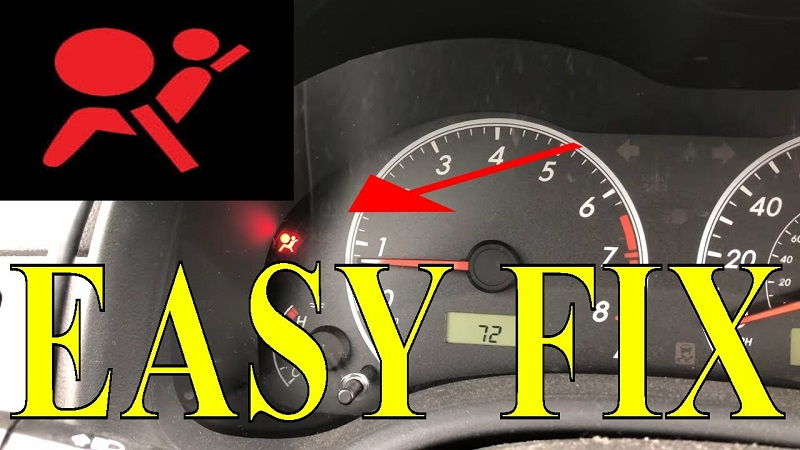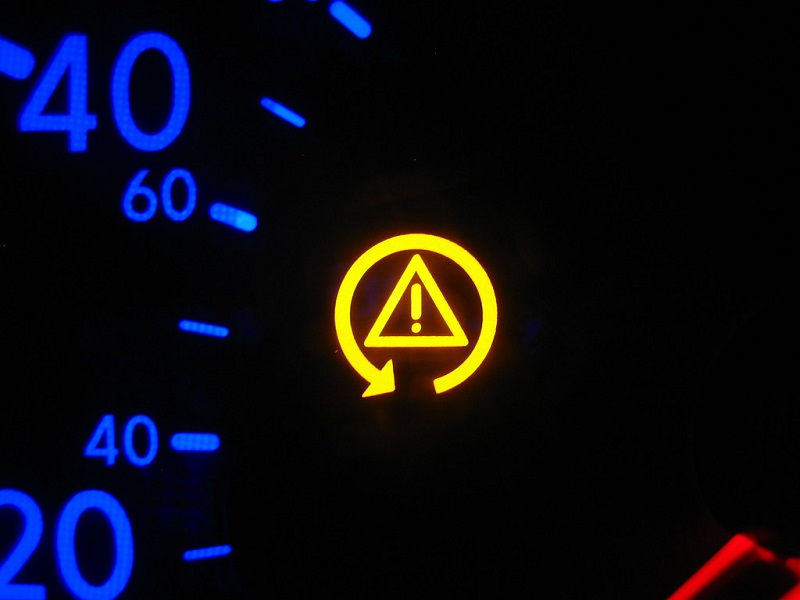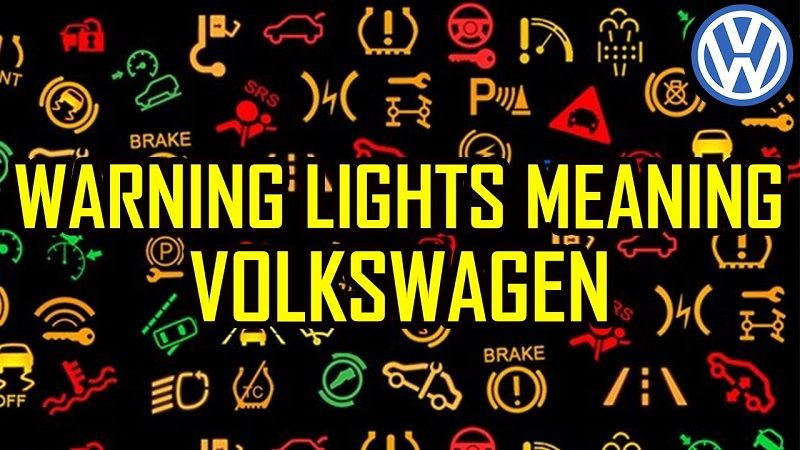This post contains affiliate links. This means I will make a commission at no extra cost to you should you click through and make a purchase [ “As an Amazon Associate, I earn from qualifying purchases.” ]. Read the full disclosure here.
Volkswagen Dashboard Symbols GuideMechanic.Com Have you ever been driving your Volkswagen, only to see a mysterious symbol light up on your dashboard? Don’t panic! Understanding what these symbols mean can help you stay informed about your vehicle’s health and prevent any potential issues.
In this article, we will provide a detailed and comprehensive guide to decoding the dashboard symbols in your Volkswagen.
Whether you own a Volkswagen Polo, Golf, Passat, or any other model, it’s essential to familiarize yourself with the various symbols that may appear on your dashboard.
See Also: Kia Sportage Dashboard Symbols
Knowing what each symbol represents can save you from unnecessary stress and potential breakdowns. Let’s dive into this guide and demystify the meanings behind these symbols.
Volkswagen Dashboard Symbols: Engine Warning Light


When the engine warning light illuminates on your Volkswagen’s dashboard, it is a sign that something is amiss with your vehicle’s engine.
This symbol resembles an engine block and can vary in color, usually red or yellow, depending on the severity of the issue.
Possible Causes
There are several potential causes for the engine warning light to turn on. It could indicate a malfunction in the engine’s components, such as the fuel injection system, ignition system, or emission control system.
It may also be triggered by a loose or faulty gas cap, a failing sensor, or even a more serious mechanical issue.
Recommended Actions
If the engine warning light comes on, it is crucial not to ignore it. Even if your vehicle seems to be running fine, there could be an underlying problem that requires attention.
The first step is to check if any other symptoms accompany the illuminated symbol, such as unusual noises, vibrations, or a decrease in performance. If everything else appears normal, you can try the following steps:
- Ensure that the gas cap is tightly secured.
- Check the dashboard gauges for any abnormal readings, such as overheating or low oil pressure.
- Inspect the engine compartment for any visible signs of damage or leaks.
- If you have a diagnostic tool, connect it to the OBD-II port to retrieve any error codes that may provide insight into the issue.
- If none of these steps resolve the problem or you notice other concerning symptoms, it is best to consult a qualified mechanic or contact your nearest Volkswagen service center for professional assistance.
Volkswagen Dashboard Symbols: Battery Warning Light

The battery warning light in your Volkswagen resembles a battery outline and typically appears in red. When this symbol lights up, it indicates a problem with your vehicle’s battery or the charging system.
Possible Causes
There are various reasons why the battery warning light may illuminate. It could be due to a faulty battery, a malfunctioning alternator, a loose or damaged belt, or even a problem with the voltage regulator.
Recommended Actions
If the battery warning light comes on, it is crucial to take prompt action to avoid being stranded with a dead battery. Follow these steps to address the issue:
- Check if any other electrical components, such as headlights or interior lights, are functioning properly. Dim or flickering lights can indicate a weak battery or charging system.
- Inspect the battery terminals for any corrosion or loose connections. If necessary, clean the terminals and tighten them securely.
- If you have a multimeter, you can test the battery voltage to determine if it is within the recommended range. A voltage below 12.2 volts when the engine is off could indicate a weak battery.
- Consider jump-starting your vehicle if the battery is completely drained. However, keep in mind that jump-starting is a temporary solution and you should have the battery and charging system checked by a professional.
- If the battery warning light persists or you notice other issues, such as difficulty starting the engine or frequent battery drain, it is advisable to seek assistance from a certified technician or contact your local Volkswagen service center.
Volkswagen Dashboard Symbols: Oil Pressure Warning Light

When the oil pressure warning light illuminates on your Volkswagen’s dashboard, it signifies a potential problem with the engine’s oil pressure. This symbol usually looks like an oil can with a dripping spout and is typically colored red.
See Also: O2 Sensor Check Engine Light
Possible Causes
The oil pressure warning light can activate due to several reasons. It may indicate a low oil level, a malfunctioning oil pump, a clogged oil filter, or an oil leak. Insufficient oil pressure can lead to engine damage if not addressed promptly.
Recommended Actions
If the oil pressure warning light comes on, it is crucial to take immediate action to prevent engine damage. Follow these steps to address the issue:
- Check the oil level using the dipstick. If it is low, add the recommended oil type and quantity to bring it to the proper level. Refer to your owner’s manual for specific instructions.
- Inspect the engine for any signs of oil leaks. Common areas to check include the oil pan, valve cover gasket, and oil filter. If you notice any leaks, have them repaired as soon as possible.
- If the oil level and visible leaks appear normal, it is advisable to turn off the engine immediately and avoid driving the vehicle. Continuing to drive with low oil pressure can cause severe engine damage.
- Contact a qualified mechanic or your nearest Volkswagen service center for professional assistance. They will be able to diagnose the issue accurately and perform any necessary repairs.
Volkswagen Dashboard Symbols: Brake System Warning Light

The brake system warning light in your Volkswagen represents a circle enclosed in parentheses, with an exclamation mark in the center. When this symbol lights up, it indicates a problem with your vehicle’s braking system.
Possible Causes
Several factors can trigger the brake system warning light, including low brake fluid level, a malfunction in the brake system components, worn brake pads, or a faulty ABS (Anti-lock Braking System) sensor.
Check out this LifeStraw Personal Water Filter for Hiking, Camping, Travel, and Emergency Preparedness

Recommended Actions
If the brake system warning light illuminates, it is crucial to address the issue promptly to ensure your safety on the road. Follow these steps to troubleshoot the problem:
- Check the brake fluid level. If it is low, add the recommended brake fluid type to bring it to the appropriate level. Refer to your owner’s manual for specific instructions.
- Inspect the brake pads for wear. If they appear significantly worn or if you hear squeaking or grinding noises when applying the brakes, it may be time to replace them.
- If the brake fluid level and brake pads seem normal, it is advisable to have the braking system inspected by a qualified mechanic or contact your local Volkswagen service center.
- Avoid driving the vehicle if you notice other symptoms, such as a spongy brake pedal, reduced braking performance, or the ABS system not functioning properly. Contact professional assistance immediately.
Volkswagen Dashboard Symbols: Tire Pressure Monitoring System (TPMS) Warning Light

The TPMS warning light in your Volkswagen resembles an exclamation point inside a horseshoe shape. This symbol indicates that the tire pressure in one or more of your vehicle’s tires is too low.
Possible Causes
The TPMS warning light can activate due to various reasons. It may be triggered by a slow tire leak, a sudden drop in temperature affecting tire pressure, or even a malfunction in the TPMS sensors.
Recommended Actions
If the TPMS warning light comes on, it is crucial to address the issue to avoid potential tire damage or compromised safety. Follow these steps to resolve the problem:
- Check the tire pressure in all four tires using a reliable tire pressure gauge. Inflate or deflate the tires to the recommended pressure levels specified in your owner’s manual or on the driver’s door jamb.
- If you notice a significant drop in tire pressure or suspect a tire leak, visually inspect each tire for any punctures or damage. Consider having the tire repaired or replaced if necessary.
- If the tire pressure and tire condition appear normal, it is advisable to have the TPMS system checked by a qualified technician or contact your local Volkswagen service center.
- Remember to periodically check your tire pressure and adjust it as needed to maintain optimal performance and safety.
Volkswagen Dashboard Symbols: ABS Warning Light

The ABS warning light in your Volkswagen typically resembles the letters “ABS” surrounded by a circle. When this symbol lights up, it indicates a problem with the Anti-lock Braking System, which helps prevent wheel lock-up during braking.
Possible Causes
There are several possible causes for the ABS warning light to illuminate. It may be triggered by a faulty ABS sensor, a malfunctioning ABS module, a damaged ABS ring, or a problem with the brake fluid level.
Recommended Actions
If the ABS warning light comes on, it is crucial to address the issue to ensure the proper functioning of your vehicle’s braking system. Follow these steps to troubleshoot the problem:
- Check the brake fluid level. If it is low,add the recommended brake fluid type to bring it to the appropriate level. Refer to your owner’s manual for specific instructions.
- Inspect the ABS sensors located near each wheel for any visible damage or debris. Clean them if necessary and ensure they are securely attached.
- If the brake fluid level and ABS sensors seem normal, it is advisable to have the ABS system checked by a qualified mechanic or contact your local Volkswagen service center.
- Avoid driving the vehicle if you notice other symptoms, such as a spongy brake pedal, prolonged braking distances, or the ABS system engaging unexpectedly. Seek professional assistance immediately.
Volkswagen Dashboard Symbols: Airbag Warning Light

The airbag warning light in your Volkswagen resembles an inflated airbag, typically located on the passenger side of the dashboard. When this symbol lights up, it indicates a potential problem with your vehicle’s airbag system.
Possible Causes
There are several reasons why the airbag warning light may illuminate. It could be triggered by a faulty airbag sensor, a malfunctioning airbag module, a loose connection, or even a problem with the seat belt pretensioners.
Recommended Actions
If the airbag warning light comes on, it is crucial to address the issue to ensure the proper functioning of your vehicle’s safety systems. Follow these steps to troubleshoot the problem:
- Check if any other warning lights are illuminated on the dashboard. Multiple warning lights may indicate a more significant electrical issue.
- Ensure that all passengers, especially children, are properly restrained using seat belts or appropriate child safety seats.
- If the airbag warning light persists, it is advisable to have the airbag system inspected by a qualified mechanic or contact your local Volkswagen service center.
- Avoid driving the vehicle if you notice other symptoms, such as the horn not functioning, or if you suspect a significant electrical problem. Seek professional assistance immediately.
Volkswagen Dashboard Symbols: Coolant Temperature Warning Light

The coolant temperature warning light in your Volkswagen typically resembles a thermometer submerged in water. When this symbol lights up, it indicates that the engine’s coolant temperature is too high.
Possible Causes
Several factors can trigger the coolant temperature warning light, including a low coolant level, a malfunctioning thermostat, a faulty coolant temperature sensor, or a problem with the cooling fan.
Recommended Actions
If the coolant temperature warning light comes on, it is crucial to address the issue promptly to prevent engine overheating and potential damage. Follow these steps to troubleshoot the problem:
- Check the coolant level in the coolant reservoir. If it is low, add the recommended coolant type and quantity to bring it to the appropriate level. Refer to your owner’s manual for specific instructions.
- Inspect the engine for any visible coolant leaks. Common areas to check include the radiator, hoses, water pump, and heater core. If you notice any leaks, have them repaired as soon as possible.
- Ensure that the cooling fan is functioning correctly. You can do this by observing if it engages when the engine reaches operating temperature. If the fan does not activate, it may indicate a problem with the fan motor or the cooling fan relay.
- If the coolant level and visible leaks appear normal, it is advisable to stop driving the vehicle and seek assistance from a qualified mechanic or contact your local Volkswagen service center.
- Continuing to drive with an overheating engine can cause severe damage and potentially lead to a costly repair.
Volkswagen Dashboard Symbols: ESP/ASR Warning Light

The ESP/ASR warning light in your Volkswagen typically resembles a car with squiggly lines beneath it. When this symbol lights up, it indicates a problem with your vehicle’s Electronic Stability Program (ESP) or Anti-Slip Regulation (ASR).
Possible Causes
The ESP/ASR warning light can activate due to various reasons. It may be triggered by a faulty wheel speed sensor, a malfunctioning steering angle sensor, a problem with the ABS system, or even a low tire pressure condition.
Recommended Actions
If the ESP/ASR warning light comes on, it is crucial to address the issue to ensure the proper functioning of your vehicle’s stability and traction control systems. Follow these steps to troubleshoot the problem:
- Check if any other warning lights are illuminated on the dashboard. Multiple warning lights may indicate a more significant electrical issue.
- Inspect the tires to ensure they are properly inflated to the recommended pressure. Adjust the tire pressure if necessary.
- If the warning light persists, it is advisable to have the ESP/ASR system inspected by a qualified mechanic or contact your local Volkswagen service center.
- Avoid driving the vehicle if you notice other symptoms, such as the steering feeling heavy or the vehicle pulling to one side. Seek professional assistance immediately.
Volkswagen Dashboard Symbols: Fuel Level Warning Light
Check out this YETI Rambler 14 oz Mug, Vacuum Insulated, Stainless Steel with MagSlider Lid, Stainless

The fuel level warning light in your Volkswagen typically resembles a gas pump. When this symbol lights up, it indicates that your vehicle’s fuel level is low and it’s time to refuel.
Possible Causes
The fuel level warning light is a simple reminder that your vehicle’s fuel level is approaching empty. It may be triggered by a low fuel level sensor detecting a specific threshold set by the manufacturer.
Recommended Actions
If the fuel level warning light comes on, it is crucial to refuel your vehicle as soon as possible to avoid running out of fuel. Follow these steps to ensure you have a sufficient fuel level:
- Locate the nearest gas station and plan your route accordingly.
- Fill up your vehicle with the appropriate fuel type recommended by the manufacturer.
- Consider resetting the trip meter or noting the mileage to keep track of your vehicle’s fuel efficiency and estimate the remaining distance you can travel on the current fuel level.
- Regularly monitor your fuel level to avoid running low and potentially causing damage to the fuel system.
In conclusion, understanding the symbols on your Volkswagen’s dashboard is crucial for maintaining your vehicle’s performance and safety.
By decoding these symbols and taking appropriate action when necessary, you can ensure a smooth and trouble-free driving experience.
See Also: Truck Dashboard Symbols and Meanings
Remember to consult your Volkswagen owner’s manual for specific details about your vehicle’s symbols and recommended procedures. Drive safely!
Related video of Volkswagen Dashboard Symbols: A Comprehensive Guide to Understanding and Decoding
- Project Trucks for Sale Cheap - July 1, 2025
- Salvage Title Trucks for Sale - July 1, 2025
- Restored Classic Trucks for Sale - July 1, 2025

